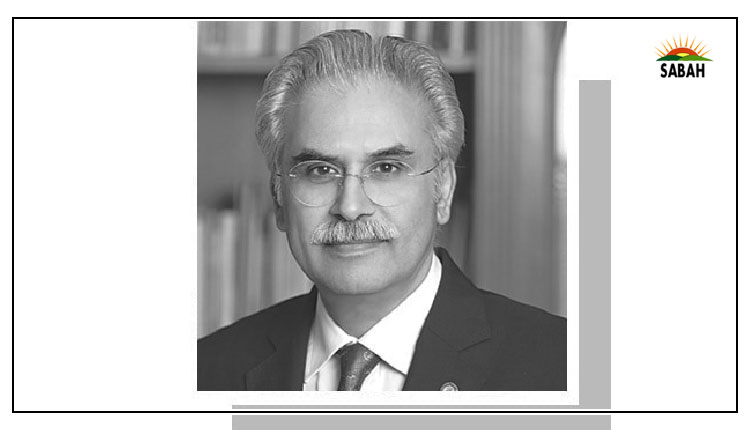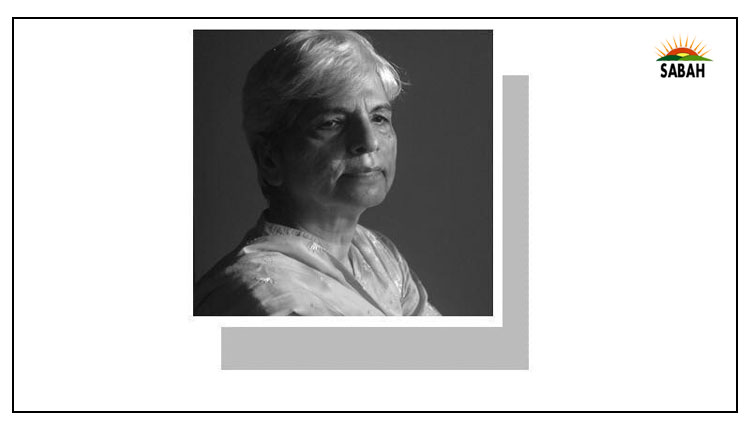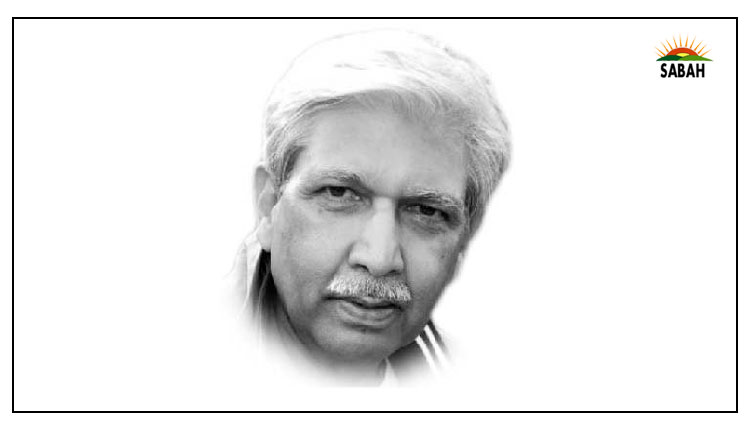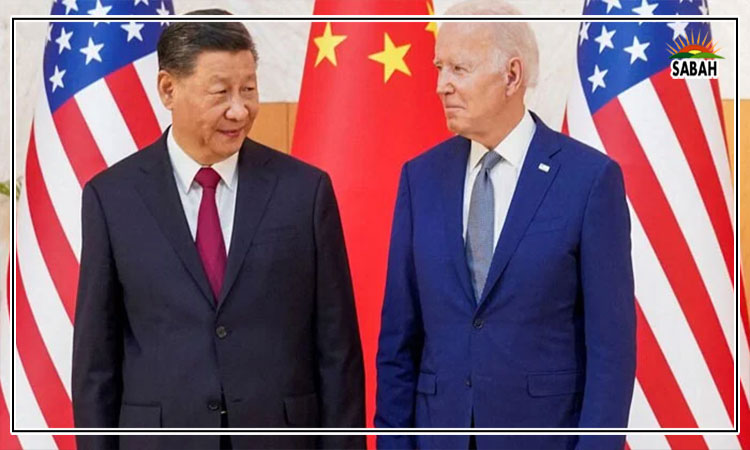Back to the cold war? ….Hussain H Zaidi
Does the tiff between the United States and China prefigure a return to the politics of the cold war era (1945-89), which divided the world into two hostile blocs for nearly half a century? The answer to this question entails comparing the dynamics of the cold war with those of the present era.
The adversaries during the cold war were not two nations or even ordinary blocs but two systems, each based on a philosophy or doctrine, which competed for supremacy in the post World War II era. On the one hand was communism spearheaded by the USSR; on the other was capitalism led by the US. The basis of communism was dialectical materialism or Marxism, which saw the establishment of a classless society based on collective ownership of the means of production as the inevitable destiny of mankind.
The basis of capitalism was liberalism. Its cardinal principles were the institution of private property and its corollary profit maximization, the individual’s right to choose, minimum government intervention in economic activity, and multiparty democracy. According to Marx, the interests of the capitalist and working classes could never be reconciled and the victory of the latter must be built on the annihilation of the former. Hence, the clash between the two blocs representing two mutually antagonistic systems was carved in stone.
Thus the USSR refused to join the 1944 US-sponsored Brettonwoods Agreement, which provided for setting up institutions for global economic governance. Moscow thus did not join the International Monetary Fund (IMF), the World Bank, and the General Agreement on Tariffs and Trade, the three flagship institutions of the Brettonwoods or capitalist system. The cold war lines were thus drawn and were obliterated only with the demise of communism in the USSR in 1989 and later in its East European allies.
As part of its containment strategy, the US provided support to the regimes fighting communism in different parts of the world, drew up the Marshall Plan for Europe’s economic reconstruction, and set up the North Atlantic Treaty Organization (Nato) as the key military alliance of the capitalist camp to take on the communist ‘threat’. The USSR responded with its own network of anti-capitalism alliances.
An exceedingly significant development of the cold-war era was the establishment of the People’s Republic of China in one of the oldest civilizations in the world, which, in the words of Encyclopedia Britannica, has been remarkable for its ‘longevity and resilience as a discrete politico-cultural unit’. The West was hostile towards the rise of communism in another country the size of a continent. This hostility was sharpened by the Korean War in which the US and China fought on opposite sides.
On the whole, as opposed to the USSR with which they concluded the Treaty of Friendship, Alliance, and Mutual Assistance in 1950, the Chinese espoused peaceful coexistence with non-communist states embodied in the slogan ‘Unity for All’. The ancient Chinese principle of universal harmony and an inherent disdain for imperialism were powerful forces behind that stance. During the 1980s while the USSR was entrenched in its doomed Afghan war, China was opening up its economy and moving up the growth trajectory, thus setting the stage for the country’s successful integration into the global economic and trading systems.
The most significant feature of the end of the cold war was the emergence of economic liberalism or free market philosophy as the undisputed economic doctrine of the world. China, which maintained its one-party political system, gradually switched to market economy status in a new arrangement called Socialism with Chinese Characteristics, now re-named Socialism with Chinese Characteristics for a New Era.
The economic reforms have done wonders, making China a shining star on the international horizon. It is the world’s largest manufacturer as well as exporter of merchandise goods ($3.3 trillion), the second-largest trading nation ($5.8 trillion), the largest trading partner of more than 100 countries, the globe’s consistently fastest growing economy until it slowed down in recent years and the second-largest economy overall ($18 trillion GDP), has greater foreign exchange reserves ($3.11trillion) than any other country, and has been one of the largest recipient of foreign direct investment (FDI) in recent years ($157 billion in 2023). Of late, China has also emerged as one of the largest sources of FDI, which testifies to its expanding global influence. Per-capita income has crossed $12,000, which is quite remarkable, given the enormous size of the Chinese population (1.41 billion).
The flagship Belt and Road Initiative (BRI) bears the unmistakable stamp of China’s growing economic muscles. Unveiled in 2013, the BRI aims at global connectivity through infrastructure development and trade facilitation. Between 2015 and 2022, Chinese FDI into BRI countries, including Pakistan, went up from $15 billion to $21 billion and the value of contracted construction projects in these countries rose from $92 billion to $130 billion. Likewise, China’s merchandise trade with BRI countries crossed $2 trillion in 2022.
The upswing in China’s economy has been accompanied by a downswing in America’s. It is widely forecast that, at current growth rates, China will overtake the US as the world’s largest economy by the end of the next decade. Although militarily, Washington will remain well ahead of Beijing, a redistribution of economic power will act heavily on each nation’s capability to shape international events.
Many in the US believe that the changes in the relative economic strength of the two countries are not simply concurrent; instead they are causally connected. China’s massive trade surplus vis-a-vis the US, which is attributed to its ‘unfair’ trade and investment practices, has hobbled the growth of the American economy and dislocated import-competing sectors, ushering in job losses. From the economic standpoint, the argument doesn’t carry much weight. In a post industrial economy, like the US, manufacturing takes a back seat because of increased cost of production and the competitive advantage switches over to the services sector, which anchors both economic activity and job creation. Being the globe’s manufacturing power house with complete value chains in most sectors, China remains the favourite destination for multinational enterprises.
In order to block the rise of China, the US has resorted to the use of the familiar device of sanctions on its high-tech companies, such as Huawei, and additional import duties on a range of Chinese products. In the latest move, Joe Biden has slapped duties on import of electric vehicles (up to 100 per cent), solar cells (up to 50 per cent), advanced batteries (up to 25 per cent), medical equipment and steel products from China, thus following in the footsteps of his adversary Donald Trump. The action has been taken in the name of fair trade and protecting American workers, as the country braces for the November presidential election.
The move’s long-term economic impact aside, it sends out a clear message to Beijing that whether it’s Trump (Republican) or Biden (Democrat) at the helm, the US will continue to punish China. Not surprisingly, China’s commerce ministry described the new tariffs as ‘political manipulation,’ while the foreign ministry spokesperson termed them ‘a naked act of bullying’. The electric vehicle (EV) industry in particular represents the face of a new and advanced China. Some 60 per cent of all EVs used in the world are produced in China. Although at present the US is not a considerable buyer of Chinese EVs, the new tariffs will stifle the prospects of China getting a foothold in the world’s largest consumer market in this sector.
Despite the escalating tensions, the US-China tiff can hardly be termed heralding a return to cold war politics, for the reason that it does not, and will not, pit two ideologies against each other. Despite being on the other side of Washington on quite a few international issues, Beijing has no alternative doctrine of economic organization to espouse. It has been a beneficiary of market economics, which is the bedrock of Western economic and political systems, and remains wedded to it. It is a member of both the IMF and the World Trade Organization (WTO). Nor does China believe in bloc politics – unlike the former USSR (Warsaw pact), it hasn’t put in place its own military alliance – and zero-sum competition.
The writer is an Islamabad-based columnist. He tweets/posts @hussainhzaidi and can be reached at: hussainhzaidi@gmail.com
Courtesy The News












